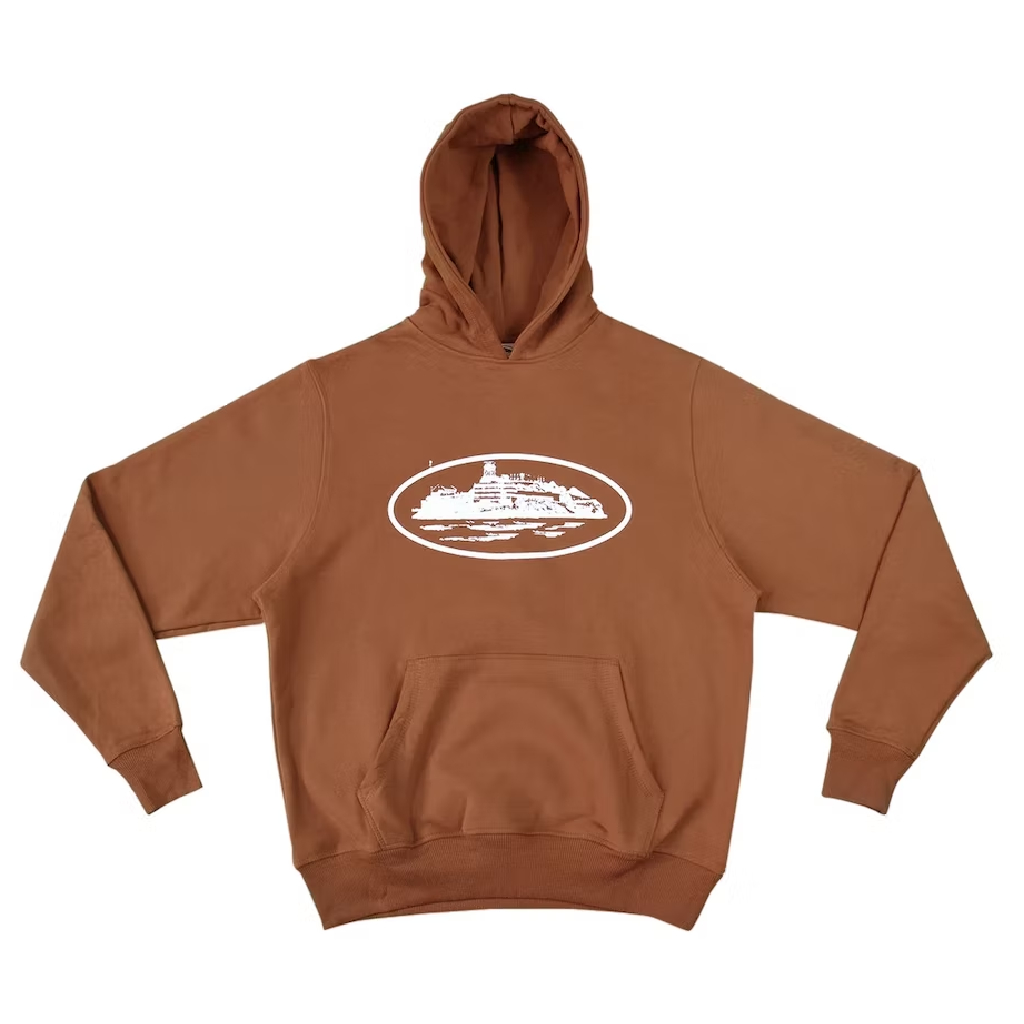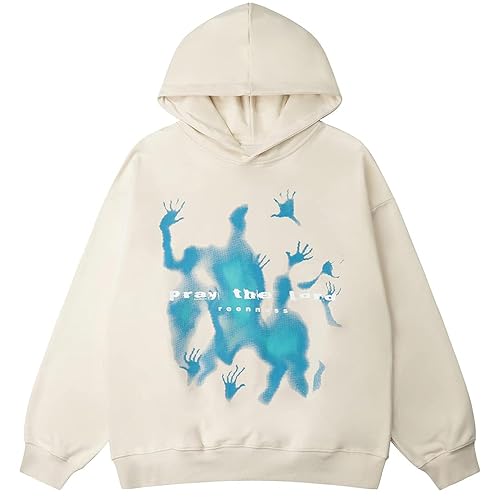Choosing the right fabric for your hoodie can make a significant difference in comfort, durability, and style. Hoodies have become a wardrobe staple, offering a blend of casual comfort and versatile fashion. Whether you’re selecting a hoodie for lounging, exercising, or making a fashion statement, understanding the fabric options available can help you make an informed decision. This guide will explore the most popular fabrics used in hoodies, their benefits, and how to choose the right one for your needs. Make a statement with our exclusive line of hoodies at crtzrtwshop.com offering a wide range of choices to express your unique style.
Understanding Hoodie Fabrics
Hoodie fabrics come in a wide range of materials, each offering unique properties and benefits. The most common fabrics include cotton, polyester, fleece, and blends. These materials vary in terms of breathability, durability, softness, and warmth. When choosing a fabric, consider the primary use of the hoodie. For instance, a hoodie designed for workouts might prioritize moisture-wicking properties, while one intended for lounging at home might focus on softness and warmth.
Cotton: The Classic Choice
Cotton is one of the most popular materials for hoodies due to its softness, breathability, and versatility. A 100% cotton hoodie is comfortable to wear and gentle on the skin, making it an excellent choice for everyday wear. Cotton is also hypoallergenic, which is beneficial for those with sensitive skin. However, cotton hoodies can shrink when washed and may not retain their shape as well as synthetic fabrics. Despite these drawbacks, the comfort and natural feel of cotton make it a favorite for many. Transform your living space with our exquisite collection of hoodies at minustwoshops.com curated for style and sophistication.
Polyester: The Performance Fabric
Polyester is a synthetic fabric known for its durability and moisture-wicking properties. Hoodies made from polyester are often lightweight and quick-drying, making them ideal for athletic activities. Polyester is also resistant to shrinking and stretching, which helps maintain the hoodie’s shape over time. However, polyester is not as breathable as natural fabrics, which can make it less comfortable in hot weather. Despite this, its performance features make it a popular choice for sportswear and activewear hoodies.
Fleece: Warmth and Comfort
Fleece is a synthetic fabric designed to provide exceptional warmth and comfort. Made from polyester, fleece is soft, lightweight, and has excellent insulating properties, making it perfect for cold weather. Fleece hoodies are popular for outdoor activities and casual wear during the winter months. The fabric is also quick-drying and easy to care for, which adds to its appeal. However, fleece can be prone to pilling, and it may not be as breathable as other materials. Despite these minor drawbacks, the cozy warmth of fleece makes it a favorite for many.
Cotton-Polyester Blends: The Best of Both Worlds
Blending cotton and polyester combines the best properties of both fabrics. Hoodies made from cotton-polyester blends offer the softness and breathability of cotton with the durability and moisture-wicking properties of polyester. These blends are often used to create versatile hoodies that are comfortable for everyday wear while still being suitable for physical activities. The blend helps reduce shrinkage and maintains the shape of the hoodie better than 100% cotton. This makes cotton-polyester blends a popular choice for those seeking a balanced fabric.
French Terry: Lightweight and Absorbent
French terry is a type of fabric with loops on one side and a smooth, soft surface on the other. This fabric is typically made from cotton, polyester, or a blend of both. French terry is lightweight and absorbent, making it ideal for transitional weather and layering. Hoodies made from French terry are comfortable and breathable, offering a casual yet stylish look. The fabric’s absorbency also makes it suitable for light workouts. However, French terry may not provide as much warmth as heavier fabrics like fleece, but its versatility and comfort make it a popular choice.
Bamboo: Eco-Friendly and Soft
Bamboo fabric is an eco-friendly alternative that is gaining popularity in the fashion industry. Hoodies made from bamboo are incredibly soft, breathable, and moisture-wicking. Bamboo is naturally antibacterial and hypoallergenic, making it an excellent choice for those with sensitive skin or allergies. Additionally, bamboo fabric is sustainable and environmentally friendly, as bamboo plants grow quickly and require minimal resources. While bamboo hoodies may be more expensive than those made from traditional fabrics, their comfort and eco-friendliness make them a worthwhile investment.
Wool: Natural Warmth and Durability
Wool is a natural fiber known for its exceptional warmth and durability. Wool hoodies are ideal for cold weather, as the fabric provides excellent insulation while remaining breathable. Wool is also naturally moisture-wicking and odor-resistant, making it suitable for various activities, including outdoor sports and casual wear. However, wool can be itchy for some people, and it requires special care when washing. Despite these considerations, the natural warmth and longevity of wool make it a great choice for winter hoodies.
Fleece-Lined: Ultimate Cozy Comfort
Fleece-lined hoodies combine the benefits of a regular hoodie with the added warmth and comfort of a fleece lining. These hoodies are perfect for those looking for extra coziness during colder months. The fleece lining provides additional insulation, making the hoodie exceptionally warm without adding significant weight. Fleece-lined hoodies are often made from cotton or polyester exteriors with a soft fleece interior. This combination ensures durability and comfort, making them a popular choice for winter wear.
Choosing the Right Fabric for Your Lifestyle
Selecting the right fabric for your hoodie depends on your lifestyle and intended use. If you need a hoodie for outdoor activities or sports, consider performance fabrics like polyester or blends that offer moisture-wicking and durability. For everyday wear, cotton and cotton-polyester blends provide comfort and breathability. If warmth is your priority, fleece and wool are excellent choices. Additionally, consider eco-friendly options like bamboo for a sustainable wardrobe.
Caring for Your Hoodie
Proper care is essential to maintain the quality and longevity of your hoodie, regardless of the fabric. Always check the care label for specific washing and drying instructions. For cotton hoodies, use cold water and avoid high heat in the dryer to prevent shrinking. Polyester and synthetic blends are generally more durable and can withstand higher temperatures, but it’s still best to follow the care instructions. Fleece and wool require more delicate care, often involving hand washing or gentle machine cycles and air drying. By following these guidelines, you can ensure your hoodie remains in great condition for years to come.
Conclusion
Choosing the right fabric for your hoodie involves considering your lifestyle, the intended use of the hoodie, and your personal preferences. Whether you prioritize comfort, warmth, durability, or eco-friendliness, there is a fabric that will meet your needs. Understanding the properties and benefits of different hoodie fabrics can help you make an informed decision and find the perfect hoodie for any occasion.




